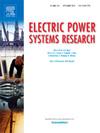基于改进深度强化学习算法的DFIGs风力发电系统次同步振荡抑制策略
IF 4.2
3区 工程技术
Q2 ENGINEERING, ELECTRICAL & ELECTRONIC
引用次数: 0
摘要
并联补偿电网的双馈感应发电机(DFIG)风电场的次同步振荡特性受到运行工况、控制参数和外部环境等多种因素的影响。风电场与电网之间复杂多变的相互作用导致了互联系统中不同的振荡模式。本研究旨在开发一种自适应次同步阻尼控制器(SSDC),以增强系统在动态现实条件下的阻尼和运行稳定性。首先,采用联合分布自适应迁移学习方法(JDA-TFL)定位多工况下的振荡源;SSDC在振荡源处的最佳位置显著降低了控制成本。其次,将SSDC设计问题重新定义为马尔可夫决策过程(MDP),将测量的电参数对系统稳定性的敏感性嵌入到奖励函数构造中。第三,利用结合探索网络的双延迟深度确定性策略梯度算法(EMTD3)生成最优控制信号。激励机制提高了模型探索最优策略的能力。此外,采用多经验概率重播策略加速训练收敛。最后,通过多场景仿真验证了该方法的有效性和鲁棒性。该方法为减轻风力发电系统的SSOs提供了一种新的解决方案,对提高风力发电系统的可靠性具有重要的理论和实践意义。本文章由计算机程序翻译,如有差异,请以英文原文为准。
Sub-synchronous oscillation suppression strategy in wind power systems with DFIGs based on improved deep reinforcement learning algorithms
The characteristics of sub-synchronous oscillations (SSOs) in Doubly-Fed Induction Generator (DFIG)-based wind farms connected to series-compensated grids are influenced by various factors such as operating conditions, control parameters, and external environments. The complex and variable interaction between the wind farm and the grid leads to diverse oscillation patterns in interconnected systems. This study aims to develop an adaptive sub-synchronous damping controller (SSDC) that enhances system damping and operational stability under dynamic real-world conditions. First, a joint distribution adaptive transfer learning method (JDA-TFL) is employed to locate oscillation sources under multiple operating conditions. The optimal location of the SSDC at the oscillation source significantly reduces control costs. Second, the SSDC design problem is redefined as a Markov Decision Process (MDP), with the sensitivity of measured electrical parameters to system stability being embedded in the reward function construction. Third, the twin delayed deep deterministic policy gradients algorithm incorporating an exploration network (EMTD3) is utilized to generate optimal control signals. The encouragement mechanism improves the model's ability to explore the optimal strategy. Additionally, a multi-experience probability replay strategy is employed to accelerate training convergence. Finally, the effectiveness and robustness of the proposed method are validated through simulations across multiple scenarios. The proposed method offers a novel solution for mitigating SSOs in wind power systems, with significant theoretical and practical implications for enhancing the reliability of these systems.
求助全文
通过发布文献求助,成功后即可免费获取论文全文。
去求助
来源期刊

Electric Power Systems Research
工程技术-工程:电子与电气
CiteScore
7.50
自引率
17.90%
发文量
963
审稿时长
3.8 months
期刊介绍:
Electric Power Systems Research is an international medium for the publication of original papers concerned with the generation, transmission, distribution and utilization of electrical energy. The journal aims at presenting important results of work in this field, whether in the form of applied research, development of new procedures or components, orginal application of existing knowledge or new designapproaches. The scope of Electric Power Systems Research is broad, encompassing all aspects of electric power systems. The following list of topics is not intended to be exhaustive, but rather to indicate topics that fall within the journal purview.
• Generation techniques ranging from advances in conventional electromechanical methods, through nuclear power generation, to renewable energy generation.
• Transmission, spanning the broad area from UHV (ac and dc) to network operation and protection, line routing and design.
• Substation work: equipment design, protection and control systems.
• Distribution techniques, equipment development, and smart grids.
• The utilization area from energy efficiency to distributed load levelling techniques.
• Systems studies including control techniques, planning, optimization methods, stability, security assessment and insulation coordination.
 求助内容:
求助内容: 应助结果提醒方式:
应助结果提醒方式:


